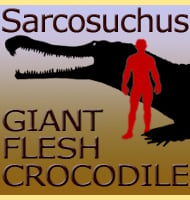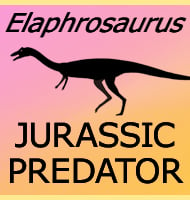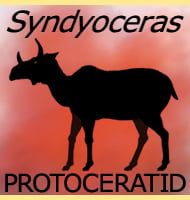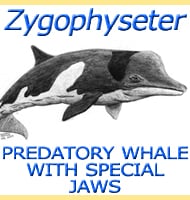History of Discovery
Known in popular culture the world over as ‘terror birds’ the scientific term for these birds is actually phorusrhacids, after the Phorusrhacidae group to which they all belong. Naming taxonomic families is actually a simple process of naming it after the first member of the group to be discovered by science, in this case Phorusrhacos. Upon its naming by Florentino Ameghino in 1887 no precedent for large carnivorous birds existed in South America (Although other large birds were known in other parts of the world), and Ameghino thought that the lower toothless jawbone (the actual skull was not yet known) actually belonged to some large mammal. However Ameghino soon realised that his original description was a mistake, something that was confirmed by new and more complete fossil material.
Large flightless birds are actually well-known across the world, but their diets have always been a matter of strong debate as their beaks are well adapted for either a carnivorous or herbivorous lifestyle. Phorusrhacids however have one key difference in their beaks, and that is the way they strongly curve downwards to form a ‘pick’ that protrudes well below the lower jaw. This feature is seen on every single living bird that feeds by ripping flesh from the body of other animals and is seen as a clear indication that phorusrhacids were meat eaters. This dietary preference combined with the immense size of some of their associated genera is why they are known the world over as terror birds.
Phorusrhacid Morphology & Biology
Phorusrhacids were similar in their general appearance to other large flightless birds, and for size the ostrich is sometimes used for a rough comparison. Phorusrhacids typically had very long legs which saw them carrying themselves high off the ground. Not only would this provide efficient locomotion over distances, but many of the larger phorusrhacids are thought to have been capable of incredible speeds. Actual speed estimates can vary greatly but larger members are thought to have been capable of at least attaining forty-five kilometres an hour, with more gracile members of the group being even faster.
The head was held up high on a long neck something that not only would have given phorusrhacids significant reach, but a high vantage point to spot prey. Study of large phorusrhacid skulls has also revealed areas for large jaw opening muscles. Not only would these have counteracted the jaw closing muscles, they may have also allowed for more rapid opening and closing of the mouth.
CAT scans of phorusrhacid skulls confirm that they were strongest when withstanding downwards stresses from below, but not so much against side wards motions. The beak was also confirmed as being completely hollow and while this could be taken as a weight saving feature, it has also been interpreted as a resonating chamber. If this interpretation is correct then phorusrhacids may have called out to one another by closing their bill hard against the skull with the sound of the impact resonating inside this chamber.
CAT scans have also allowed for reconstruction of phorusrhacid brains and inner ears. The inner ears themselves are well developed to aid a sense of balance like you might expect, but reconstructions also show that phorusrhacids could probably hear a wide range of sound frequencies (something that lends some support to the resonating chamber theory. The actual brain reconstruction shows that phorusrhacids had excellent vision and were able to make full use of their height advantage. Phorusrhacids also had a well-developed cerebral cortex that meant the phorusrhacids were not restricted to pre-defined thought patterns and could adapt their behaviour to deal with new situations. One particularly interesting part of the brain was the severe underdevelopment of the brains olfactory ability. This means that a phorusrhacids sense of smell was so poor it was barely useful. It also means that phorusrhacids most probably had a greater reliance upon actively hunting prey rather than scavenging.
Phorusrhacids are what are termed secondarily flightless in that they evolved from the early flying birds that first appeared back in the Mesozoic. The wings themselves are greatly reduced and probably useless for flying, but they may have still served a display purpose for attracting mates. Claws on the wings may have also been used in interspecific combat between individuals, perhaps as an alternative weapon to the devastating beak.
Phorusrhacid eggs are so far largely unknown and would have varied in size depending upon the genera in question. Larger phorusrhacids may have had eggs comparable in size to ostriches (ovoid and fifteen by thirteen centimetres), although larger eggs may have been laid. In the absence of eggs the only possible way of estimating egg sizes would come from looking at the post cranial remains (where possible) and making an educated guess.
Seriema birds
It is hard to talk about terror birds without hearing seriema birds mentioned somewhere. This is because the two extant (not extinct and still alive) genera, Cariama cristata and Chunga burmeisteri, are thought to be the closest living things to the extinct terror birds. Their overall body shape is very similar to the Phorusrhacids, but upon a scale similar to the smaller members of the group. Seriema birds are known to be capable of flying short distances and roosting in trees up to three meters high off the ground, but it is still uncertain if the smaller Phorusrhacids were capable of this. While some palaeontologists have claimed it is possible, others have refuted this idea.
Hunting, Killing and Eating
Although fast runners, phorusrhacids may have still used ambush tactics to approach prey. This is because their large and more importantly tall forms would be easy to identify from a distance, allowing herbivores the chance to extend the amount of ground between them and their hunter. A better tactic for a phorusrhacids would be to stay on the fringe of an outcropping of trees and blend in amongst the trunks. As long as they stayed amongst the sparser areas of growth, or even better scared prey into the open then they could use their superior speed to close the gap and attack.
How phorusrhacids killed prey depends upon the size of the prey in question. As mentioned above the skulls were not adapted to withstand large amounts of side wards stress which means that phorusrhacids probably would not have tied to hold onto larger prey for risk of injury. This also makes it unlikely that smaller prey was shaken from side to side as some mammalian carnivores are seen to do. The actual shape of the skull and the fact that it can withstand strong downwards forces is what gives clues to the two most widely accepted methods of killing.
The pronounced hook tip of the beak is seen in most predatory birds as a feeding aid, but many phorusrhacids have such pronounced tips that they seem unnecessarily large. It’s thought that the larger phorusrhacids could combine this tip with their strong height advantage to initiate a series of downward strikes on top of their prey, specifically key critical areas such as the neck. spine and top of the skull that would have been most exposed from above. When brought down with enough force this tip could have shattered and separated vertebrae as well as cave in the top of the skull, either injury capable of bringing paralysis or even instant death to their prey. Killing of smaller prey is based upon observation of seriema birds which pick up small vertebrate prey like lizards in their beaks, before throwing them back down against the ground and hard objects with as much force as they can. Not only does this stun and kill the prey but it also breaks the preys bones so that it can be more easily swallowed whole.
Often phorusrhacids would have killed prey that was simply too large to be swallowed and would have needed to have been eaten in bites. Here the hook tip of the beak would dig into the flesh and pull back. The lower jaw would then close, shearing off the chunk of flesh so that the bird had a bite sized morsel. Phorusrhacids may have also used the claws on their feet to tear up carcasses as well as pushing down on them so that they could use their body weight to help remove pieces of flesh.
World Distribution
The vast majority of phorusrhacids currently known have been found in South America, especially in Argentina, Uruguay and Brazil. The precise evolutionary beginning of phorusrhacids is not certain, but the oldest known member, Paleopsilopterus, was discovered in Brazil and is dated back to sixty million years ago. So far the only exception to the South American exclusiveness to the phorusrhacids is Titanis, the first Terror bird to be discovered n North America.
Titanis fossils discovered in Texas however have been dated to the early Pliocene five million years ago, long before the establishment of a permanent land bridge to North America. There does seem however to have been the development of islands between North and South America during this earlier time. Tectonic movement was still pushing up land masses and fluctuating sea levels may have caused a large variance in land coverage. Since Titanis could not fly it would have had to swim, raft or exploit changing coastlines all the way to North America.
However the same series of events that allowed Titanis to colonise North America may have also brought about the downfall of the Phorusrhacidae.
The Great American Interchange and the Extinction of the Terror Birds
Phorusrhacids disappear from the fossil record around two million years ago, during the Gelasian stage of the Pleistocene. Some sources however still continue to incorrectly quote their final disappearance as being as recent as ten thousand years ago. This figure is based upon the discovery of Titanis remains along with other creatures known to live from this time period, but these remains were all at the bottom of the Santa Fe River in Florida, and had been washed about by the water currents which caused all of the fossils to be mixed up. Analysis of the mineral content of the fossils confirmed that the Titanis fossils were actually formed two million years prior (more details for this are on the Titanis page on this website).
Around half way into the Pliocene period (three and a half million years ago) the Isthmus of Panama was formed by a combination of volcanic and tectonic activity. Ocean cooling towards the end of the Pliocene also resulted in falling sea levels which further increased the new land masses. The formation of this land bridge had a profound effect upon the world, disrupting ocean currents and migratory routes of animals like whales. But the most significant development for the phorusrhacids was that they were no longer isolated from the rest of the world. This triggered the event now called the Great American Interchange which saw new predators such as the sabre toothed cat Smilodon establish a presence in areas where phorusrhacids had previously been the dominant predators. Phorusrhacids had already lived alongside other predators such as Thylacosmilus, but native South American predators had always evolved and lived under the threat of the phorusrhacids. The new predators now spreading into South America however had evolved along their own lines, and were likely to have had different hunting behaviour and strategies that could have put them on a par with the phorusrhacids.
Another factor that affected the phorusrhacids was South America’s steadily changing climate. The rising Andes Mountains that run down the eastern side of South America triggered most of the rain fall to fall on them (as clouds rise over mountain ranges changing air currents and pressures trigger rainfall). This resulted in other parts of South America becoming much drier with forested scrublands becoming arid steppes and open savannah. Not only would this change the kinds of herbivores available, phorusrhacids would have found themselves very exposed and not able to use cover to hide their tall forms. Even fast running predators don’t have much chance of catching prey if their prey can see them coming at a distance. It would at the very least mean that phorusrhacids would have had to expend a greater amount of energy in killing prey, reducing their efficiency and making it harder to compete with new predatory rivals. The attrition of these two factors combined is probably what saw the downfall of the phorusrhacids that are now forever known as the terror birds.
List of phorusrhacids (terror birds)
Andalgalornis
Andrewsornis
Brontornis
Devincenzia
Kelenken
Mesembriornis
Paleopsilopterus
Paraphysornis
Patagornis
Phorusrhacos
Physornis
Procariama
Psilopterus
Titanis









